In the words of the movies, Jaws has “wrapped,” struck its sets and stolen away in mammoth trucks. Filming of Peter Benchley’s best-selling novel, Jaws, was started by Universal Studios on the Island May 2, and for the rest of the summer caravans of trucks moved about the Island like nomads, shooting here or there - mostly there - and out at sea where no one could really get a good look at what was happening.
The saga of the making of the movie Jaws will be a great one in the annals of filmdom, and no doubt stories about how it was done will surface often - so will the sharks.
Beach and land shots were normal. These had been done on location for years. So had shots of people in houses butchering whales and sharks. So had shots of 400 people being chased (although probably never before by imaginary sharks.) There have been movies about the sea, sinkings, giant whales, giant squids, armadas and sailing craft in all sorts of dire situations, and all of them have looked just a bit fake. But all of them have been bathtub scenery done in special studio tanks weather-controlled, light-controlled and wave-controlled. The director could set up a scene and take it with no rush before the light changed, no hassle with the competitive tides and no overenthusiastic waves. It was a man-made situation—and it looked it.
When the art director, Joe Alves, and the people director, Steve Spielberg, learned a year ago last July that they would be making the movie, they began by watching sea movies (all of them) and came to the same conclusion that viewers had come to years ago — the sea scenes looked fake. Determined that this would not happen to their movie, Mr. Alves and Mr. Spielberg studied special effects, and one assistant director, Andy Stone, went to a special effects school where he saw the ultimate - but to him also it still looked fake.
There seemed to be only one solution to the forged look, and that was to do it for real. So, sometime in the summer of 1973, Mr. Alves with book in hand, toured New England and decided on Martha’s Vineyard because Edgartown’s staid white houses looked as if they housed people most likely to be undone by a shark scare. Menemsha was perfect for a dirty rogue of a fisherman like Quint, and an Island ringed with beaches and bare horizons and without a long drop of tide would be perfect for the sea scenes.
Last September he started to draw from the book, because they still had no scenario and still didn’t when they started shooting last May. He drew with the Island in mind — real boats, real houses, real beaches, real seas, real people and real sharks — to a point. It was this dedication to realness which prolonged the shooting and caused untold frustrating hours.
“If this doesn’t work,” said Mr. Alves, “I’ll probably get the blame.”
The shark of course was a problem. Mr. Benchley had made him an exceptionally active shark, and Universal had made him more active. He didn’t just swim in the sea eating people at a leisurely rate, oh no, he entered lagoons, ponds, broke into shark cages, slunk through cocktail parties, towed docks and sank boats; while his diet included not just people, but dogs, rubber mattresses, children on Sailfish, chains, nude maidens (supposedly dragon fare) and steak.
Sharks aren’t bright enough to be trained (while having a slight tendency toward eating their trainers) however they can be lured, but they will also lurk, pounce and be downright dishonest. Therefore, much to Mr. Alves’ chagrin fake sharks just had to be used, but only as a last resort when the real ones waxed uncooperative.
Absolutely ingenious mechanical sharks, designed to look, feel and move like the real thing tended to behave like the real thing — unpredictably. There’s no record of one of them eating anyone, but they sure pulled every other trick in the book, and scared the divers half to death.
Camera, Lights and Tide
Since the beginning of the industry, the camera has been placed, the actor placed, the lights positioned, distance measured and cameras focused. And since the beginning of time boats have followed the line of least resistance and swung with the wind, tide or sometimes both. It was a situation rather like the irresistible force and the immovable object, therefore every boat, raft, rubber mattress or Sailfish used in the production had to be anchored at all four corners, held rigid against wind and tide.
Scenes would be all set up ready to go when a new current shifted the boats ever so slightly — but enough. Then all would have to be re-anchored, and by the time they were again ready to shoot, the sun would have moved. It was not a job to improve dispositions.
Scenes were shot over and over again until Robert Shaw, who played Quint, drooped and his acting deteriorated with each take until his temper disintegrated. Christopher Rebello did a scene on the first take which caused director Speilberg to comment, “I wish Robert Shaw had seen that.”
Mostly actors were in and out of the water shivering only to go overboard again, while special effects men in scuba gear prowled the bottom of Edgartown harbor like the tourists touring Main street.
The shooting flotilla consisted of about 16 boats. The tugboat White-foot under Capt. Roy W. Campbell served as mother ship, restaurant, base and towboat. A strange roofed raft with the stranger name, S. S. Garage Sale, housed dressing rooms, compressors, diving gear, a head, lumber, tools, controls for the going-up shark and a special box for working its jaws. The old City of Chappaquiddick was used as the electrical barge and carried lights, camera and action. She was a jumble of equipment, clothing, lenses, mammoth arc lights, cables and potato chips. As many as 65 people climbed over the paraphernalia, slept between it or fell into its cavities. This was under the control of Capt. Hershel West and his poodle Tipper. One of them (no one is sure which) kept a great supply of cookies and Coke stashed somewhere in the bowels of the bedlam.
Another pile driver was the generator barge and carried what wouldn’t fit on the other including its own supply of plastic cups of potato chips. The star of the armada was Orca who has the largest nautical role and Orca’s sinking stand-in, known as Orca II. There were also drydocks for sharks, one for the going-up shark and one for the going-straight shark with an overhead platform, and Lynn Murphy’s Valery N., complete with a compressor, controlled the going-straight shark and Orca II’s sinkings. All the working boats were tended by a fleet of small inboards and outboards under captains with inland waters’ papers. They all had names repeated often on the walkie-talkies (available on every hip) Popeye, Got-cha, Fascinating Rhythm, Ruddyduck, Itchy, Flossy and an unnamed yellow Whaler and a Mako named Jaws. These were continually dispatched on errands, ashore for garbage bags, lumber, people, suddenly needed essentials, or were occupied unceasingly transporting the crew from one working raft to the other. Two rubber Zodiacs also joined the chaos picking up divers and dumping off swimmers.
Shooting from all Craft
Shooting moved from craft to craft so all the boats had platforms for cameras and men which could be set up over the side, over the water, or in the water. Even Orca had a platform as the camera could shoot directly into her cockpit. More than once the camera, safe in its water box, went over the side to shoot directly at water level and many times it nearly went over without it.
Once (fortunately it only happened once) two of the big fabulous Panavision cameras rented at $24,000 a week went under water when Orca II sank deeper than was expected. The cameras were immediately packed in fresh water and sent to New York. What happened to the cameras is not known, but the film was developed in perfect shape.
People at sea get hungry so part of the operation included huge containers of coffee and soup which were delivered to each of the big boats (each with its own label, Garage Sale or electric barge or White-foot) along with doughnuts, coffee cake, bagels (at the request of Richard Dreyfus who got fat) and long sleeves of plastic cups. And back ashore went big bags of garbage. There were also numerous bags of cookies and tons of sodas.
One day during a critical shot a bucket of squid (used for “guts”) went over the side and the air was suddenly filled with gulls. A sky full of gulls looked ominous over the dramatic scene, so more squid was ordered, but gulls are choosy and soon lost their taste for squid. They learned to investigate anything that came from the flotilla including the styrofoam “guts”, but when potato chips blew overboard these interested them more than anything, hence when the order went out for four cartons of potato chips, the crew ashore thought it had finally happened and the crew at sea had lost its collective marbles. (Actually they did lose their marbles, which were aboard to be slingshot at the shark to simulate bullets.)
Some Didn’t Make It
Of course with that many people hopping from boat to boat there were those who didn’t make it, but they were usually retrieved — at least there hasn’t been any evidence to the contrary (there wouldn’t be with all those sharks).
While all the chaos was ensuing at sea, Norton and Easterbrooks’ dock was a hive of inactivity. Large trucks housing equipment lined the street while police lined the curb and looked bored. Barbara Bass, an assistant director, directed dock operations dispatching boats and potato chips while teamsters (who would drive the trucks if they were driving) and feather bedders played cards in Mrs. Francis Randolph’s parking lot.
Feather bedding is part of the movies, and union rules say there should be three sound men even when three wouldn’t fit on Orca. Therefore the extra sound man was stationed in the parking lot. The studio decided, in one instance, that it would be cheaper to send one unneeded union member back to New York and save his Island support, so the man stayed home and drew a weekly check most of the summer.
Meanwhile back at the office on Summer street (which was converted into a morgue five times) the teamsters directed their transportation operations, driving incoming reporters to the dock and experts. to Shark City and over all this the Dragon Lady (alias Mrs. Robert W. Nevin) held sway.
Shark City, a self-contained operation at East Chop, was important to the operation as was the Fuller street boatshed. This is where the mechanical sharks were sequestered and repaired (they tended to wear out) and where construction and destruction were carried on under the direction of Bob Manny, a former Disney expert whose specialty is robots and compressed air.
Even the airport got into the act where film departed and returned with a regularity unknown to Island flight schedules heretofore. Most of the gear such as wet suits and radios could be imported by jet from California for less than needed to buy it new on the Island.
Edgartown in particular benefited - not that it needed any financial help during the height of the season. Someone else would have rented the rooms, houses, barns, bicycles and autos.
The real wonder is that all this could survive through the hectic isms of an Island summer without conflict, and no one got too badly hurt. One woman cut her foot on broken glass in the Fourth of July beach scene, and a man got a cracked head in an off-camera baseball game. The Coast Guard did get called into the fray complete with 78-footer and helicopter, and Whitefoot saved non-sinking Orca from sinking.
What with all the wildness off Cape Pogue, the breaking glass and the munching sharks there could have been serious damage. They were lucky.
When September loomed and the shooting was still going on, the excuse was that just a few more days would wrap it up, properly — then just a few more days. Finally officialdom put its foot down, editing was transferred to California. Robert Shaw did his last retake and was permitted out of the country (too late to save him from the IRS) and the retakes came to an end. The final scene was shot Sept. 16 (after Newsweek had been allowed to shoot a television documentary) and the “wrap party” was held that night at the Harbor View. The next day Roy Scheider, who played the police chief, Brody, and Richard Dreyfus, who played the man-from-Woods Hole, were returned to California, but the shooting continued.
Things Redone
There were a few things director Spielberg wanted redone and a few things editor Verna Fields wanted redone (Newsweek was doing a story on her too), and the last touch was to blow hell out of a shark’s head. A dynamite crew (real people from Woods Hole) arrived to set the charges, but Mr. Spielberg was shooting a beach scene.
The Garage Sale was right down wind of the shark’s head, so barricades were hurriedly constructed to keep the “blood and guts” off the cameras when the charge of eight sticks of dynamite blew. But Mr. Spielberg was off throwing marbles at another shark and never made his final scene. Transportation whisked him off the Island that night along with the cinematographer, Bill Butler, and the art director. Mr. Alves, was left to finish up the scenes he had sketched more than a year before. “It’s the longest I’ve ever been on one movie,” he said, “and it’s too long.”
The last scenes shot on the Island were done under his able hand, but not without the usual frustrations. Orca was sunk twice (and unsunk in between) to just the right bow-up position while pictures were made from different angles. Six children were continuously dumped in the could water (and continuously alternated - by now Jaws knew its own reputation for retakes) and at last under the lenses of four rolling cameras (one a special speed camera which had arrived the day before with its 10 attendant cases of equipment) the shark’s head blew up. But the wind had changed and there was no need for the barricades, and when it did go off it was satisfying to the point of being a good take, but slightly dampened by its night in the drink.
The still man, Louis Goldman, was dismissed. He went ashore, packed his cameras, returned some motor drives to George Moffett and then was told Newsweek needed some more pictures. He unpacked and just made it back out to the boats for the final sinking of Orca.
As Orca II went down for the final time, in a continuing sink until the seas closed over the top of her masthead, it was over — it was a wrap — and the applause was heard from shore to shore.
Huge brand new trailer trucks brought over on the Auriga (because they wouldn’t fit on anything else) came to collect what was left of Jaws. Tools from the boat shed, sharks from Shark City, Orca from Norton and Easterbrooks (Orca II was left behind) to go into the swells of the Pacific off Catalina where the shooting will continue while more shooting will be done in Australian waters where Craig Kingsbury’s head will be found.
If all goes as scheduled (which it hasn’t to date) Jaws will be at the Cannes Festival next June and Martha’s Vineyard will once again be on the map. The making of Jaws has attracted more documentaries and more magazine articles (even in Europe) than any of its predecessors. So, batten down the hatches, along with the trips to Dike Bridge and the County of Dukes County Court House there will now be tourists touring where Jaws was made. It’s something people will jaw about for a long time.
“Wrap!”

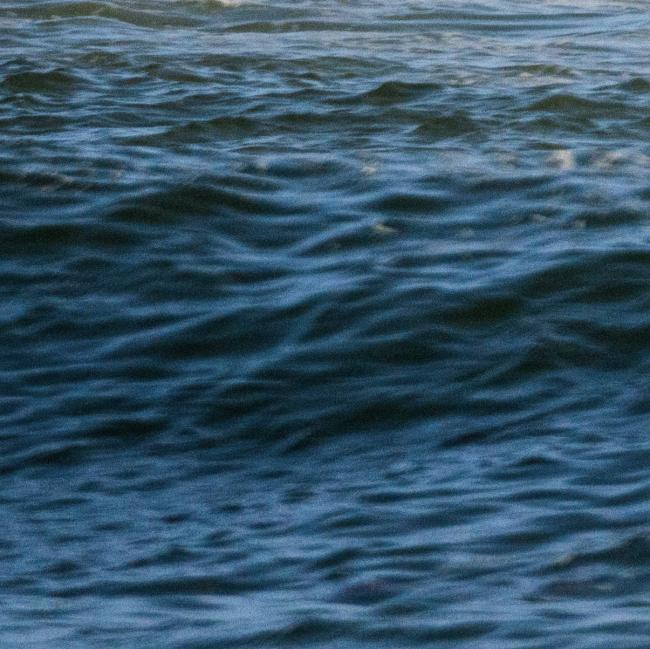
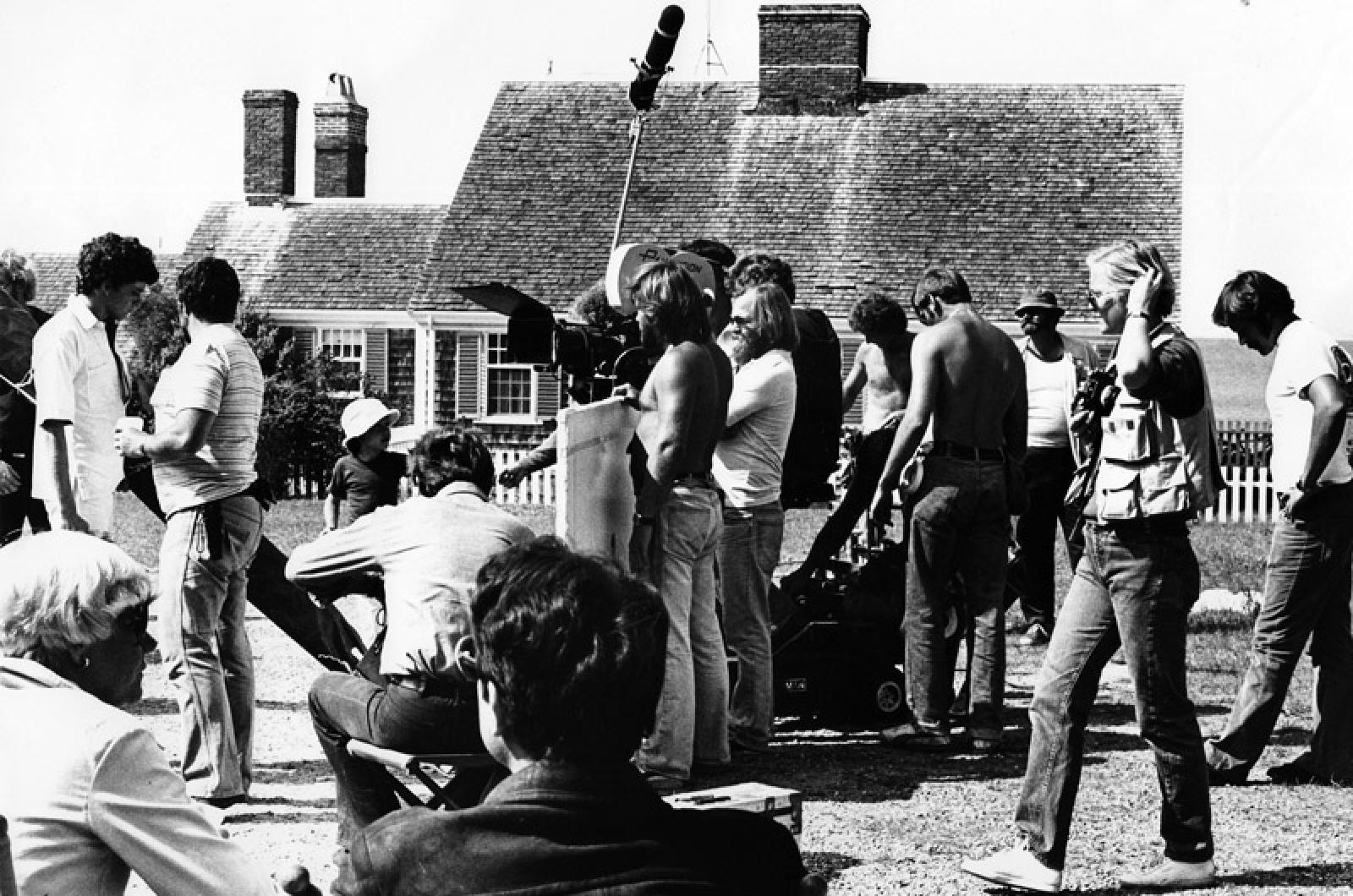


 5 comments
5 comments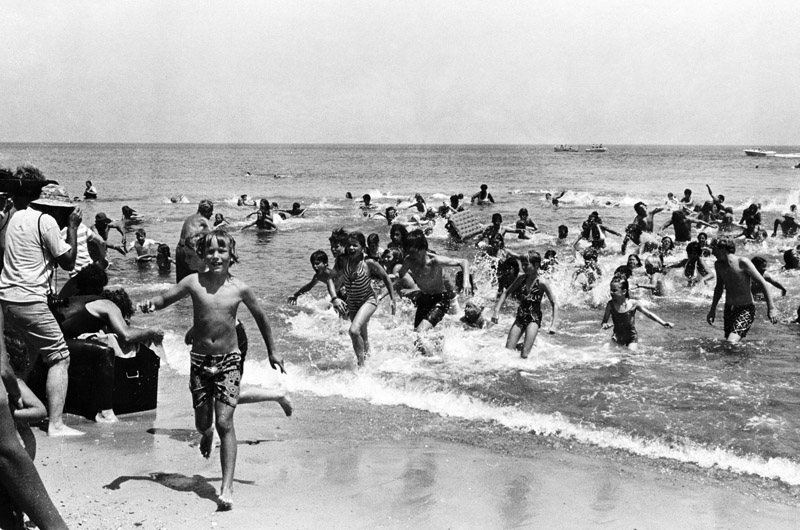
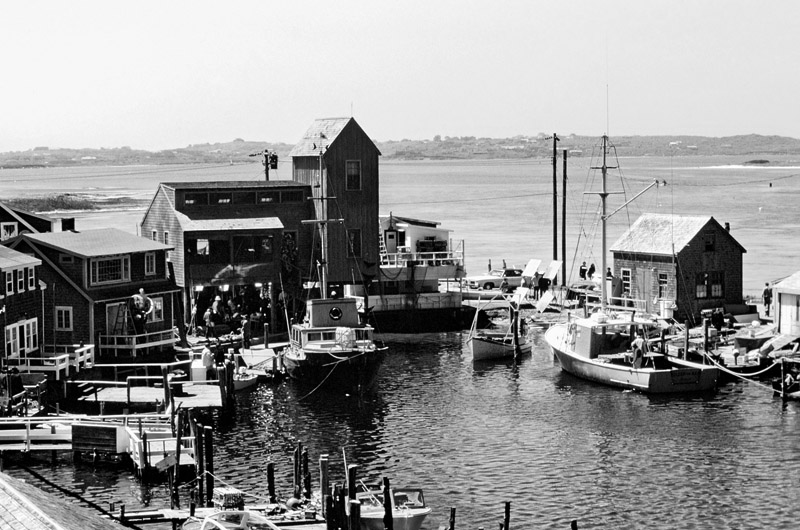
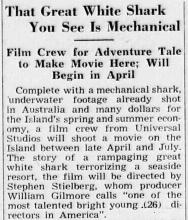
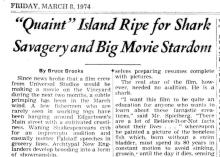
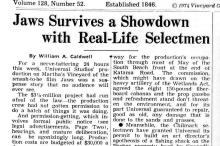
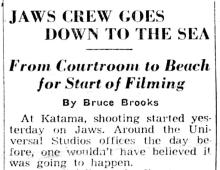

Comments (5)
Comments